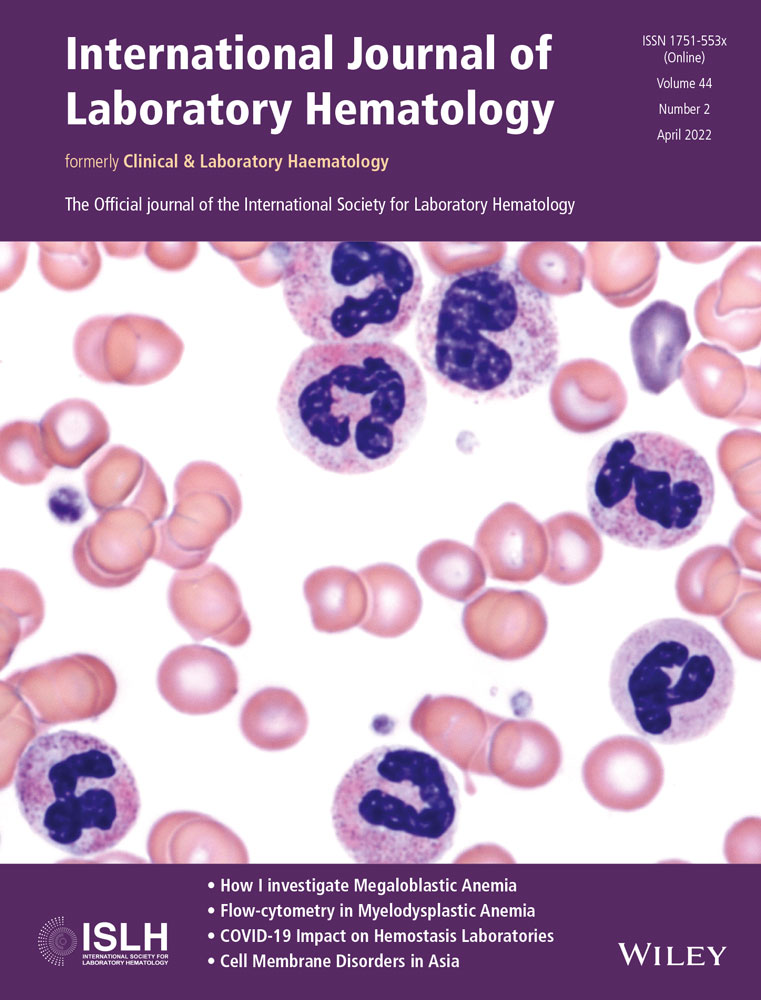Accurate white blood cell differential by Alinity hq: A comparison with flow cytometry and manual differential
Abstract
Introduction
White blood cell (WBC) differential by flow cytometry can report a six-part WBC differential and enumerate blasts. Some modern hematology analyzers are also able to provide a six-part WBC differential (including immature granulocytes). Our goal was to compare the WBC differential obtained by the Abbott Alinity hq hematology analyzer to an 8-color single-tube flow cytometry method and to manual WBC differential.
Methods
Samples from 144 patients were tested with Alinity hq, flow cytometry, and microscopic WBC differential. The WBC count ranged from 1.22 to 359 × 109/L, and 34 samples were flagged by the analyzer for abnormal WBC morphology.
Results
Strong concordance was demonstrated between Alinity hq and flow cytometry for all six components of the differential, with correlation coefficients ranging from 0.86 (basophils) to 1.00 (lymphocytes). Small, clinically insignificant positive difference was observed between Alinity hq and flow cytometry for mature and total neutrophils (2.51% and 1.85%) and eosinophils (0.14%), and small negative difference for immature granulocytes (−0.65%), lymphocytes (−0.61%), and basophils (−0.21%). No bias was detected between the Alinity hq and flow cytometry monocyte counts.
Alinity hq and flow cytometry results agreed with the manual differential, apart from small, clinically insignificant differences. Alinity hq nucleated red blood cell concentrations were equivalent with the manual results (r = 0.95, slope = 1.16). The percentage of blasts by flow cytometry demonstrated good correlation and agreement with the manual count (r = 0.99, slope = 1.35).
Conclusion
Alinity hq has produced accurate six-part WBC differential in this three-way comparison, equivalent to flow cytometry and morphological classification.
CONFLICT OF INTEREST
PG, GR, and TATP have no conflict of interest to disclose. TLD, HM, and GL served as employees of Abbott. LS served as a former employee of Abbott.
Open Research
DATA AVAILABILITY STATEMENT
The data that support the findings of this study are available on request from the corresponding author.




